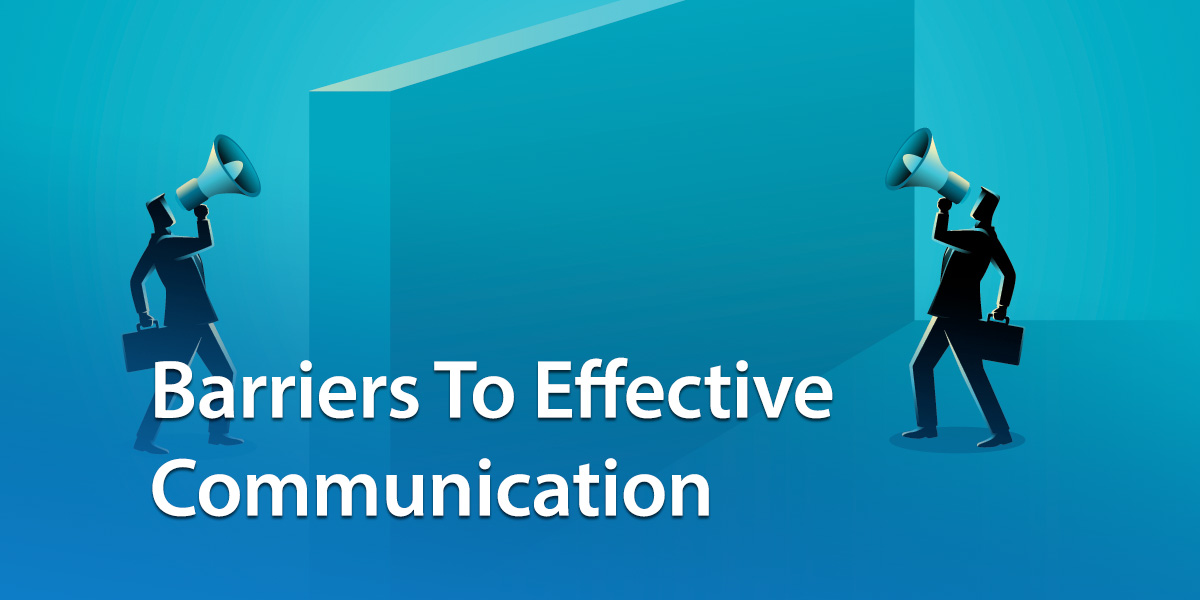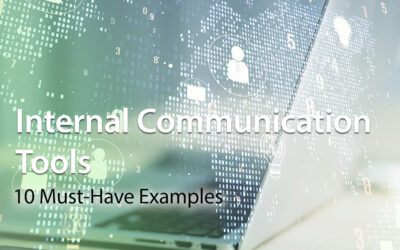Effective communication is a critical component of everyday life, both in personal relationships and in the workplace. It allows us to share ideas, thoughts, and information with others in a clear and understandable way. There are various methods of communication, including speaking, writing, and using body language, which can be used to convey our message and try to understand others’ perspectives. Don’t let common barriers to effective communication stand in the way of your success – overcome them and improve your ability to converse effectively with others.
There are often barriers that can obstruct effective communication. Barriers to effective communication include physical barriers, such as noise or distance, can make it difficult to transmit a message. In addition, certain communication skills, or a lack thereof, can create obstacles in the communication process. It’s important to overcome these common communication barriers, such as language differences and cultural misunderstandings, in order to have a successful conversation.
Effective communication is crucial in our daily lives as it helps us build and maintain relationships, solve problems, and achieve our goals. It also allows us to express ourselves and understand others. Without effective communication, misunderstandings and conflicts can arise, leading to frustration and potentially damaging relationships.
In the workplace, effective communication is essential for teams to work together and reach common objectives. It also helps organizations to clearly communicate their values, vision, mission to employees and stakeholders, and make informed decisions. On the other hand, poor communication can result in inefficiencies, decreased productivity, and missed opportunities.
Effective communication is the foundation of strong relationships and successful organizations. It allows us to connect with others, share information, and work towards common goals.
The Communication Process
Let’s talk about the communication process. It’s all about exchanging information between individuals. You’ve got the sender who’s conveying the message, the receiver who’s understanding and interpreting the message, and then you’ve got feedback to confirm understanding. It’s important for all parties to be fully involved and paying attention to the different parts of the process.
The Sender
First up, the sender. This is the person sharing the message, and it’s their job to make sure it’s clear and to the point. They have to think about the audience and the purpose of the communication and choose the right medium to share the message.
The Message
Next up, the message. This is the info that the sender is sharing. The message needs to be relevant and accurate, and for the sender to consider the audience and the purpose of the communication.
The Medium
The medium is how the message is shared. It could be speaking, writing, or using gestures. The medium has to be appropriate for the situation and the audience.
The Receiver
Then you have the receiver. This is the person receiving the message, and it’s their responsibility to mindfully listen and interpret the message correctly.
Feedback
Finally, you have feedback. This is the response to the message, whether verbal or nonverbal. It’s important for the receiver to provide feedback to the sender to confirm understanding and to make it a two-way communication process. Without feedback, the sender won’t know if the message was received and understood correctly.
Communication Process Overview
The communication process is about the sender sharing a clear and concise message through the right medium with the receiver, who provides feedback to confirm understanding. It’s a dynamic process that requires everyone to be fully engaged and paying attention.
Communication Channels
Communication channels refer to the means by which we convey information to others. There are several different types of communication channels, each with their own strengths and limitations.
Verbal Communication
Using words to share information and ideas is called verbal communication. This includes speaking, listening, and understanding spoken language. Verbal communication is a common way to connect with others and can be helpful in building relationships, resolving conflicts, and achieving goals. However, it’s not always perfect. Misunderstandings can happen, and language communication barriers can be an issue.
Still, verbal communication is a popular choice for a reason. It’s an effective way to share information and ideas with others.
Nonverbal Communication
Nonverbal communication involves the use of body language, facial expressions, and gestures to convey meaning. It can be a powerful tool for expressing emotions and reinforcing verbal communication. However, it can be difficult to interpret these types of communication, as different cultures may have different nonverbal cues.
For example, a smile may convey happiness in one culture, while it may be seen as a sign of disrespect in another culture. It is important to be aware of these cultural differences and to pay attention to body language to effectively interpret and respond to the message being conveyed. In addition, it is important to be mindful of our nonverbal communication and ensure that it is consistent with the message we are trying to convey.
Written Communication
Written communication involves the use of written language to convey a message. It can be an effective means of communicating complex information and can be used to document conversations and decisions. However, written communication can be slow and vulnerable to misunderstandings if the wording is unclear.
Communication Channels Conclusion
In conclusion, there are several different communication channels that we can use to communicate with others. Each has its own strengths and limitations, and it is important to consider the appropriate channel for the situation and audience.
Communication Barriers
Poor communication is a common barrier that prevents us from effectively sharing our thoughts and ideas. It can lead to misunderstandings, conflicts, and damaged relationships. To overcome these barriers, it’s important to focus on improving our communication skills and being proactive about addressing issues within our organization.
Poor management can often contribute to communication breakdowns, so it’s crucial to take steps to improve the way we interact with others.
By working on our communication skills and being mindful of potential barriers, we can more effectively connect with those around us and build stronger relationships.
Below we highlight common communication barriers with examples covering language, culture, psychology, gender, and physical issues.
Language Barriers
Language barriers refer to difficulties in communication that arise due to differences in language or dialect. These barriers can prevent individuals from effectively conveying or understanding messages, leading to misunderstandings and conflicts.
To overcome language differences, it is important for individuals to be aware of them and take steps to reduce their impact. This can include learning a new language, using translation tools, or relying on gestures. For example, an individual who speaks Spanish may use a translation app to talk with someone who only speaks English. Alternatively, individuals may use gestures or facial expressions to convey their message if they cannot speak the same language.
In the workplace, language issues can be especially challenging and can hinder teamwork and productivity. Employers may offer language training or hire translators to help facilitate communication among employees. It is important for organizations to be proactive in addressing language barriers in order to foster a positive and inclusive work environment.
Cultural Barriers To Effective Communication
Cultural differences can have a significant impact on our ability to interact effectively with others. Different cultures may have different norms, values, and beliefs that shape their communication styles and can lead to misunderstandings if we’re not aware of them.
One way in which cultural variations can manifest is in the form of different communication styles. For example, some cultures place a greater emphasis on indirect communication, while others may prioritize direct communication. It’s important to be mindful of these differences and try to understand and respect them to facilitate effective communication.
Generational and cultural differences can also impact communication. For example, individuals from different generations may have different expectations for how communication should occur, such as preferences for face-to-face conversations versus digital communication. In addition, each generation may have different life experiences and cultural influences that shape their communication styles and perspectives.
Another way in which societal differences can affect communication is through the different beliefs and perspectives that individuals from different cultures may bring to the conversation. A variety of factors, including religion, politics, and life experiences, can shape these differences.
By being open to and respectful of these differences, we can improve our ability to exchange ideas effectively with people from all walks of life. Understanding and respecting cultural and generational differences can go a long way toward reducing communication barriers.
Psychological Communication Barriers
Psychological barriers can sometimes interfere with our ability to communicate effectively. These barriers can be related to an individual’s emotional state, lack of self-confidence, preconceptions, or other mental factors that can distort their perception and understanding of a message.
One way that mental barriers can impact communication is through communication preferences. Different people may have different preferences when it comes to how they prefer to converse. If these preferences are not taken into account, it can lead to misunderstandings and bad communication. For example, some people may prefer face-to-face communication, while others may prefer written communication.
Another way that emotional barriers can affect communication is through employee engagement. If employees are not fully engaged in the communication process, it can lead to misunderstandings and a breakdown in communication. This can be caused by a variety of factors, including low self-esteem or a lack of confidence in their communication competence.
It’s important for individuals to be aware of their own mindset barriers and to take steps to overcome them in order to resolve communication barriers. This can involve seeking help from a mental health professional or simply being more mindful of one’s own thoughts and feelings. By addressing psychological barriers, we can ensure that we are communicating effectively with others.
Gender Barriers
Gender communication barriers can sometimes impact the way men and women interact with each other. Gender roles and expectations can create misunderstandings and lead to ineffective communication.
One way that gender communication barriers can manifest is through discomfort when communicating with people of the opposite gender. Some men and women may feel more comfortable communicating with people of their own gender, and this can lead to misunderstandings and a breakdown in communication.
Another way that gender barriers can affect communication is through the different communication styles that men and women tend to use. Men tend to use more direct and assertive communication styles, while women tend to use more indirect and collaborative styles. These differences can lead to misunderstandings and a breakdown in communication if they are not taken into account.
It’s important to be aware of these gender communication barriers and to try to overcome them in order to facilitate effective communication. This can involve being more mindful of our own communication styles and being open to the styles of others.
By understanding and respecting these differences, we can ensure that we are communicating effectively with people of all genders.
Physical Communication Barriers
Physical barriers are tangible obstacles that can hinder our ability to communicate efficiently. These barriers can take many forms, such as noise, distance, physical disability, incompatible technology, or poorly functioning equipment.
One common physical barrier is noise. If there is too much background noise, it can be difficult to hear and understand what others are saying, leading to misunderstandings and a breakdown in communication.
Distance can also be a physical barrier to communication. If people are physically far apart, it can be difficult to have face-to-face conversations, which can lead to misunderstandings and a breakdown in communication.
Physical disability can also pose a physical barrier to communication. If an individual has a physical disability that affects their ability to speak or hear, it can be difficult for them to interact with others.
Incompatible technology or poorly functioning equipment can also hinder effective communication. For example, if two people are trying to communicate using different communication technology, it can be difficult for them to understand each other. The same is true if the equipment is not functioning properly.
It’s important to be aware of these physical barriers and to take steps to overcome them in order to facilitate effective communication. This can involve using modern technology to bridge the distance gap, implementing an organizational structure that promotes face-to-face communication, or simply making sure that equipment is functioning properly. By addressing physical barriers, we can improve our ability to effectively communicate with others.
Communication Skills
Are you tired of misunderstandings and conflicts in your communication? It could be that your communication skills are holding you back. Don’t worry, with a little practice and some key strategies, you can improve your ability to effectively convey your thoughts and ideas.
One crucial aspect of effective communication is active listening. This means paying full attention to what the other person is saying and trying to understand their perspective. It’s not just about hearing the words, but also taking in nonverbal cues and emotions. Active listening requires patience and an open mind, so you can fully grasp the other person’s point of view.
Empathy is another vital communication skill. It’s about being able to see things from someone else’s perspective and understand their feelings. Empathy allows us to build deeper connections and understand the needs and concerns of others.
Different communication clues, such as body language and facial expressions, can also play a big role in how we communicate. Being aware of our own nonverbal cues and reading those of others can help us better understand the true meaning of a message.
Clarification and questioning are also key. If you’re not clear on what someone is saying, don’t be afraid to ask questions for clarification. And when you’re trying to convey a message, be clear and concise to avoid misunderstandings.
So don’t let generation and cross-cultural differences, interpersonal relationships, spoken conversation, or personality conflicts hold you back from effective communication. By working on skills like focused listening, empathy, body language, and clarification and questioning, you can confidently overcome any barriers and improve your communication.
Conclusion
In conclusion, effective communication is all about exchanging ideas, thoughts, and information with others in a way that is easy to understand. It’s important to overcome common communication barriers, like language differences and cultural misunderstandings, in order to have a successful conversation. Good communication is essential in our daily lives and in the workplace, as it helps us build relationships, solve problems, and achieve our goals.
The communication process is a dynamic exchange between the sender, who conveys a clear and concise message through the right medium, and the receiver, who provides feedback to confirm understanding.
Communication channels, like verbal and body language, are the means by which we share our message with others. It’s important to be aware of the strengths and limitations of each channel in order to effectively communicate with others.
Communication skills, like active listening, empathy, eye contact, clarification, and questioning, can help us overcome communication barriers and improve our ability to exchange information effectively. And by being mindful of cultural variations, psychological barriers, and gender communication barriers, we can better understand and respect others and facilitate effective communication.
By understanding these barriers and developing the right skills, we can confidently and effectively communicate with others and build stronger relationships.











